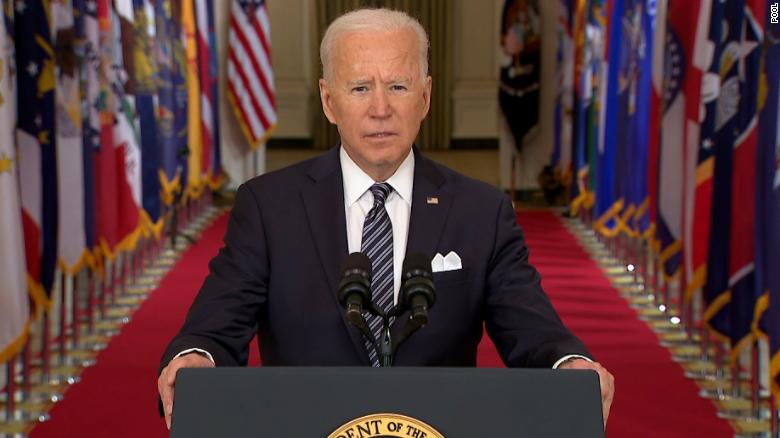
If Biden gets his way, America will have the highest individual income tax rate of any developed country in the world. Of course, that will come at the expense of those who hold assets of over $100 million. But for the president who seeks to stimulate the economy through programs such as Build Back Better, increasing taxes is not the way to go. According to The United Nations “Social justice is the view that everyone deserves equal economic, political and social rights and opportunities.” If we want social justice, we need the free market.
For as much flack as they’ve received, the Trump tax cuts have proven to be progressive in the nature of their results. Indeed, the tax burden for the top 1% increased (they paid 40.1% of all income taxes) while the burden for the bottom 50% decreased from 3.1% to 2.9%.
Of course, it wasn’t all roses. Despite what many in the Trump administration claimed would happen, the deficit increased, which meant the bill didn’t truly pay for itself.
In previous administrations, however, tax cuts performed as intended. For example, consider the tax cuts enacted by John F. Kennedy, which increased government revenues enough to later on fund the Great Society Programs. Back then, economists argued that a tax cut of $10 billion would result in an increase of $20 billion in the country’s GDP, per year, as a result of increased consumer spending, which in itself would be a result of an increase in disposable income, given that the money wouldn’t be given away in regressive taxes.
Data taken from the Economic Report of The President shows that in the period spanning from 1960 to 1964—prior to the tax cuts—consumption increased by $291 and disposable income increased by $363.1 per household. On the other hand, from 1964 to 1968—the period post tax cuts—consumption increased by $422.1 and disposable income faced an increase of $465.2. This was what Randall Woods described in his book Prisoners of Hope, as a “stroke of genius.” As he mentions, “by the first half of 1965 government revenues had actually increased $7.5 billion” (more than $58 billion in 2017) “over the last pre-tax-cut year.”
It goes without saying that an increase in government revenue makes way for more efficient government spending, which allows for the funding of successful government programs that actually help the poor. The Great Society program proposed by JFK’s successor was funded thanks to the successful tax cuts that he sought to enact.
So why did the Kennedy tax cuts of 1964 increase revenue and allow for more spending while the Trump tax cuts didn’t?
Simply put, under Kennedy, more firms paid corporate taxes than they did under Trump, where 40% of firms qualified as pass-through businesses. Under Kennedy, the rate was at 25%. Another key factor, Furno states, relies on their tax depreciation policy. While Trump had a quicker investment deduction, Kennedy’s was slower. As Steve Rosenthal noted for Bloomberg Tax, “Provisions that raise revenue by limiting companies’ ability to write off things like losses and debt interest expenses effectively shifted those benefits past that 10-year window by allowing companies to push unused deductions to future years indefinitely.”
Furno found that “for every dollar of lost corporate tax revenues, the Kennedy´s corporate tax cuts stimulate GDP four times more than the TCJA-17 [Trump’s Tax Cuts and Jobs Act of 2017]”. According to his research, had both policies been enacted at the same time, under two different but equal scenarios, long-run investment would have increased by 14.24%, under Kennedy’s reform, but with Trump’s it would have increased by 8.4%, and by 5.4% taking into consideration the interaction effect, (when two or more independent variables are taken into consideration on one or more dependent variables).
Deregulation is a big part of liberalizing the economy, but what are its effects on poverty? A study by the World Bank from 2019, titled Business Regulations and Poverty, found that business friendly policies such as deregulation have helped decrease poverty, calling business creation the “conduit for business reduction” given its role as “a source of new jobs and a manifestation of thriving entrepreneurship”. The study found an association between “the poverty headcount and business-friendly regulation.” This, after taking into consideration factors such as “the four alternative measures of property rights: the difficulty of starting a business, acquiring licenses, getting credit and contract enforcement.”
It has become a fad for modern-day politicians to demonize business owners and call effective tax cut policy a tool for enriching the 1%—all while begging for more taxes, which put the boot on an economy that sorely needs growth.
That’s a shame, because allowing the private sector to flourish benefits everyone in society. On the contrary, burdening businesses with tax hikes, and onerous regulations is a regressive policy that takes a toll on the poor. But as always, we’re reminded: Benevolent politics don’t necessarily translate to helpful policies.
Gabriel Salazar Sing is a political commentator from Costa Rica and a Young Voices contributor.
